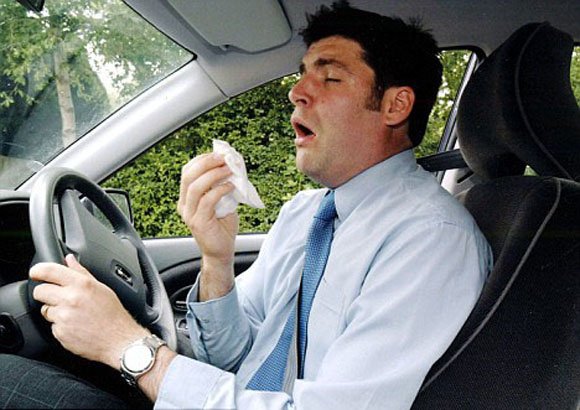7 steps to cope with hay fever behind the wheel

Summer’s here, and for many it’s one of the happiest times of the year – sunshine, picnics, holidays…what’s not to like?
But for thousands of UK hay fever sufferers it can be misery, especially when it comes to getting behind the wheel. Sneezing fits, itchy eyes and a runny nose can make driving all the more treacherous.
Thankfully, we’ve got some handy advice for hay fever sufferers getting out on the road.
1. Give dust the vacuum treatment
The first step is to tackle dust and pollen directly. These pesky particles can easily get caught inside the car, setting off your allergies every time you drive. So get the vacuum out and give all your carpets and upholstery a good once-over regularly during the summer.
Also, check if you can get a cabin pollen filter fitted in your car. And if you already have one, double check it works.
Don’t forget to give your vents a good blow too, which will clear out any dust that’s stored inside.
2. Say no to windows
The outside world is a pollen-filled horror show. So, keep your windows and external air vents shut to reduce pollen grains getting into your car.
Crank up the air-con to keep you cool when the weather warms up, just make sure it’s set to recycle mode.
3. Slow down if you sense a sneeze coming
If you feel a sneeze coming, slow down and leave plenty of space between you and the car in front. If you suffer from intense sneezing fits, try and stop the car completely if it’s safe to do so.
4. Stock up on tissues
You probably have tissues on hand at all times anyway, but make sure there’s a stash in your car that’s easy to access. Be sure you can grab them without having to take your eyes off the road.
You could also put a few dabs of Vaseline inside your nose to help catch the pollen too.
5. Always carry sunglasses
Sunglasses are certainly a worthy investment in the fight against pollen. They can help stop particles getting in your eyes, but make sure any sunglasses you wear don’t impact your vision when driving.
6. Take non-drowsy medication
Not all antihistamines are the same. If your hay fever is so bad that you require medication, and you know you need to drive, make sure you get non-drowsy tablets. Driving drowsy is dangerous, and is never worth the risk.
7. Avoid driving
The pollen count is at its highest in the early morning and late evening, so if your symptoms are particularly bad, try to avoid driving at these times. Or you could enlist the help of a non-sufferer and ask them to drive.


